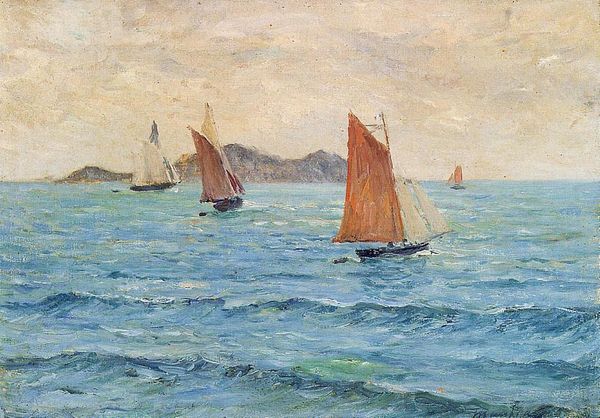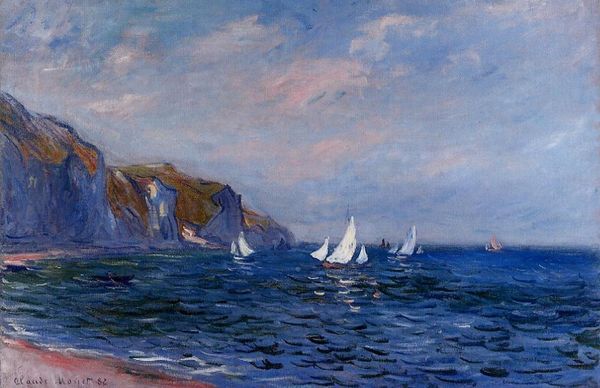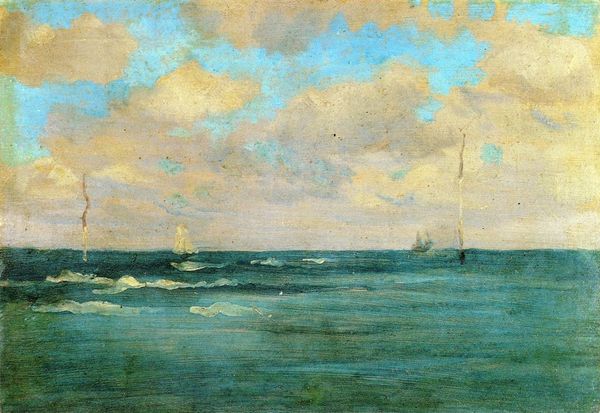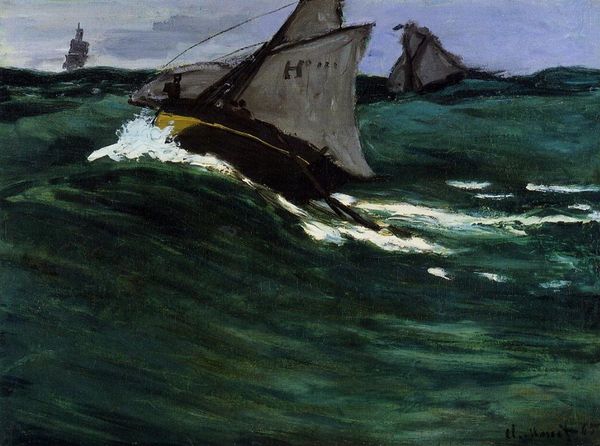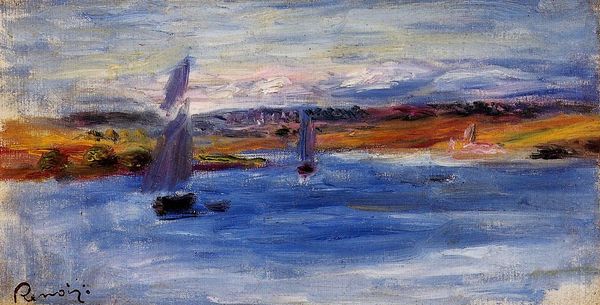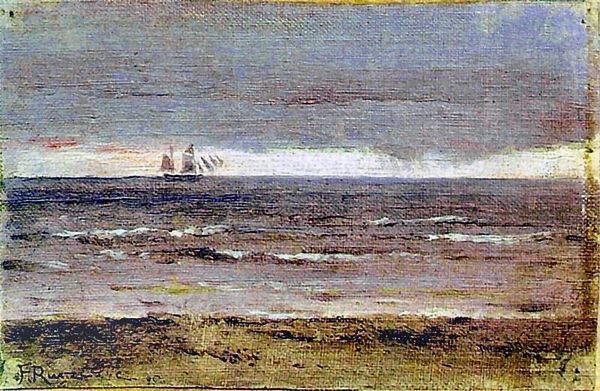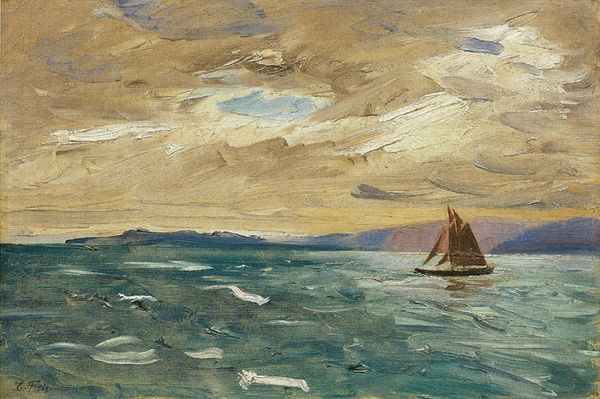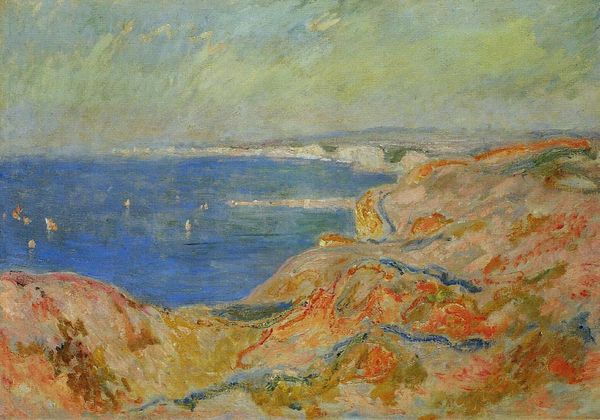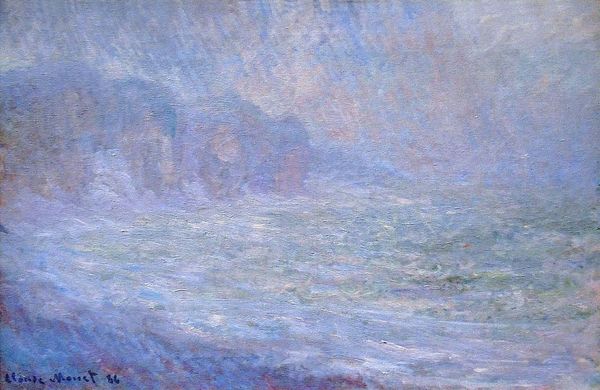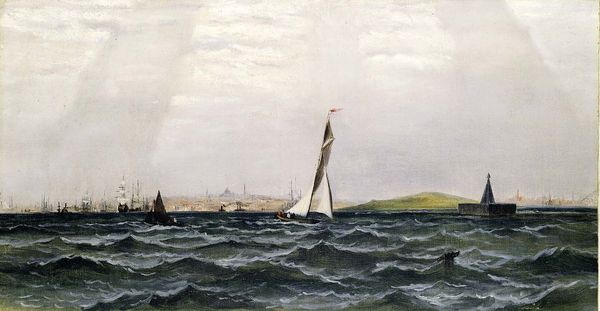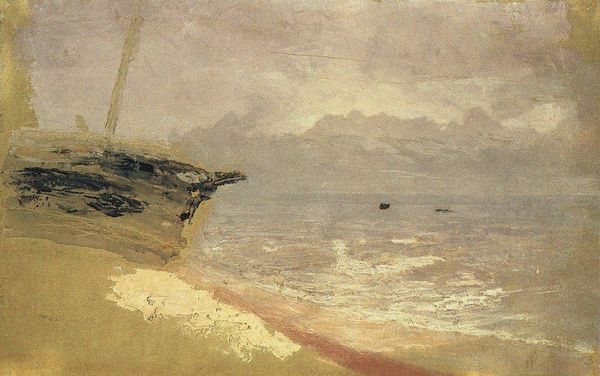
plein-air, oil-paint
#
impressionism
#
plein-air
#
oil-paint
#
landscape
#
impressionist landscape
#
oil painting
#
water
#
cityscape
Copyright: Public domain
Editor: This is Claude Monet's "Sailboats at Sea, Pourville," painted in 1882 using oil paint in a plein-air style. I'm struck by how tranquil it feels, even though the brushstrokes are quite energetic. What do you see in this piece? Curator: I see more than just tranquility; I see a complex negotiation of class and leisure embedded within this idyllic seascape. Consider the location, Pourville, a burgeoning resort town catering to the Parisian bourgeoisie. How does Monet's rendering of these sailboats—presumably symbols of leisure—speak to the growing disparity between the classes during the late 19th century? Editor: That’s interesting, I hadn’t thought of it in terms of class. I was just enjoying the pretty boats! So, you're saying it's not simply a scene of relaxation, but also a commentary on societal changes? Curator: Precisely. Impressionism, on the surface, celebrated modern life, but beneath that, we must consider its inherent biases and exclusions. Who is represented? Who is consuming this image, and what socio-economic structures enable that consumption? The location of Pourville itself is not a coincidence; it points to a specific type of leisure that was becoming increasingly exclusive. Editor: So, the act of painting "en plein air" here isn't just about capturing the light; it’s about participating in, and perhaps critiquing, a certain lifestyle? Curator: Absolutely. Think about the logistics: who has the time, resources, and social mobility to travel to Pourville and paint? These are crucial questions that reposition this painting as a historical document reflecting the complexities of its time. What new perspectives did this discussion spark in you? Editor: It's made me realize how much more there is to see beyond the surface, and that even a beautiful scene can carry layers of social meaning. I guess it forces you to ask *who* is on those sailboats! Curator: Exactly. Art doesn’t exist in a vacuum. Thinking about how class, location, and historical context are represented here makes the image all the richer.
Comments
No comments
Be the first to comment and join the conversation on the ultimate creative platform.
